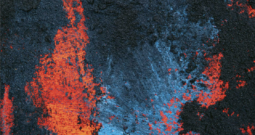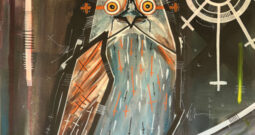from the editor's desk

Review of ‘The Valley’ by Steve Hawke
Hawke, Steve. The Valley. Fremantle: Fremantle Press, 2018. RRP $27.99. 256pp. ISBN: 9781925591187
Patricia Johnson
You have to stick with The Valley; it’s not an easy read. You generally know things are going to get complicated when the first page features a family tree. In this case, it’s four generations, seventeen characters, each with two or three names. Plenty of locations: Boxhole, Highlands, the Valley, Poison Well, the turnoff, Highlands Station, Packhorse Creek, Mount House Station, Broome, Fish Creek and many more that you’ll never keep track of. It’s as if Mr Hawke has decided to tell his story by giving the reader a name here, a location there, a nugget here, a hint there. And there is deft sleight of hand involved in telling it in not just a non-linear narrative, but in a way that leads to young Dancer—the main man, another dude in trouble—moving out of one life and into another. The reveals come slowly but while you are sucked in, you are also, at least for a time, shut out.
The framework of the novel rests on the connection of two tales. One, a murder, a gold stash, and a will in 1916. Two, an escape from bikie violence and revenge in 2005 that sends a young man to the (hidden) valley to solve the mysteries of that dead past and bring it to life again. Sifting through the discoveries is Dancer, ‘heavy-set and gangling all at once, yellow more than brown, like an adder asleep in the sun’ (9). Dancer has always wondered about his mother, who went missing and left him as a baby. Even his father, Andy, doesn’t know exactly what happened to her. When Dancer has to get out of Broome fast, the two of them head out in the old Hilux along the pindan dirt of the Gibb River Road.
Somewhere around half way through, the narrative begins to sort out the pieces of this puzzle. It’s a good feeling to recognise each piece as it clicks with a solid clunk into place, because this is where you start to care about what is happening. You want to find out, you need to know, you really do. Because by now Dancer, Andy, Two Bob and all the rest of them have, through the occult science of good writing, got under your skin. If the structure of the story is complicated to begin with, the quality of the writing is natural and seamless. Nowhere is this more evident than in Hawke’s portrayal of the Kimberley itself. No, it is not a character, but it is a pleasure to read passages like the following:
He walks to a small spring, drinks deeply, and watches a pair of rainbow bee-eaters on their never-ending forays above the rockpool. . . . . . the moon is thin. Already the bats are streaming overhead and the first dingo’s howl has become a chorus. It is a night fit for spirits. (23 -24)
Or this one:
The bush is changing. There are more boabs on either side of the road . . . through what seems a limitless, almost treeless plain dotted with a city of dun-brown anthills. There is a faint shimmer of the ranges. It is a landscape too old and wondrous to concern itself with [Dancer’s] problems. (71)
And then, how’s this for a one sentence analysis of bush culture in the ’40s?
Amongst black and white it was a country of closed mouths, minding your own business, and taking people at face value. (72)
At the time of publishing in 2018, had life changed much? Certainly, some things have improved; while significant changes have occurred–Indigenous people now have the vote and equal wages–the silent acceptance of discrimination is still prevalent. Perhaps mouths are no longer quite so closed, but minding your own business is just as ubiquitous. Whether one is taken at face value is nevertheless down to more than simply time and place; there are plenty of instances where face value is down to the colour of that face, as The Valley’s characters experience. But it remains a racism that works both ways.
By the end Dancer has learned a lot, and so has the reader. But perhaps the best thing about The Valley is the subtle presentation of thematic elements placing the reader in an unobtrusive partnership with the author, without any message blaring passages. The quiet drama of the narrative is enough. Do yourself a favour and concentrate in the beginning; you might be cheering by the end.
Originally from the east coast of the United States, Patricia Johnson has had stories and poetry published in dotdotdash, Re-Placement 2008, and Lines in the Sand, 2008, Windmills Spring, 2013, as well as in online journals. She has been an editor for dotdotdash magazine, covering poetry and short stories. She is the current President of the Fellowship of Australian Writers, Western Australia. Her latest project is a ghost story of novella size, currently looking for a publisher :).





